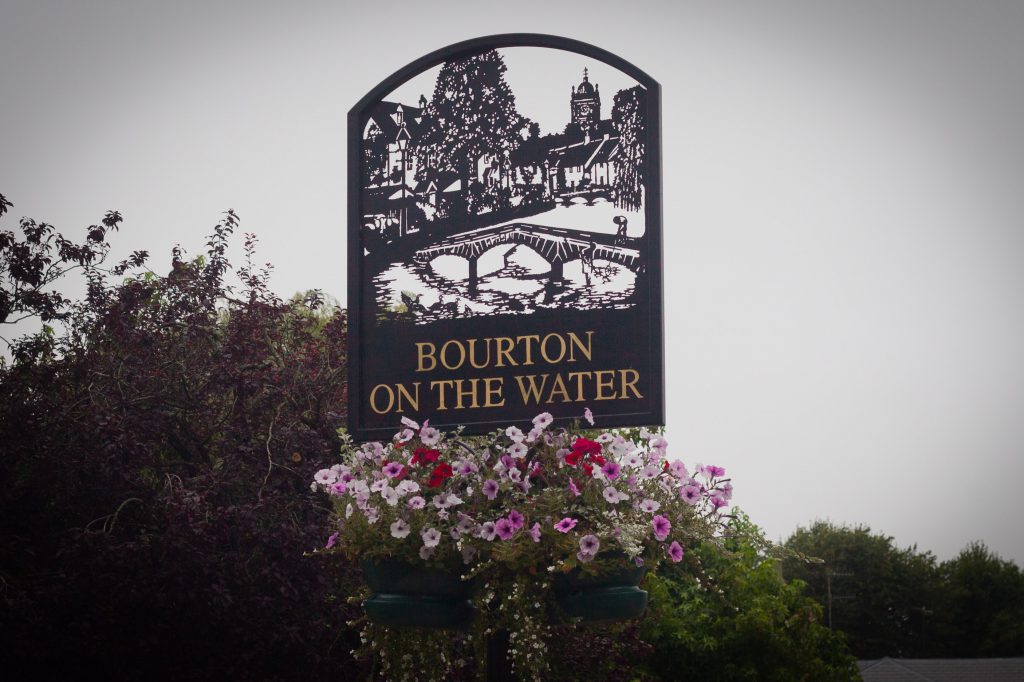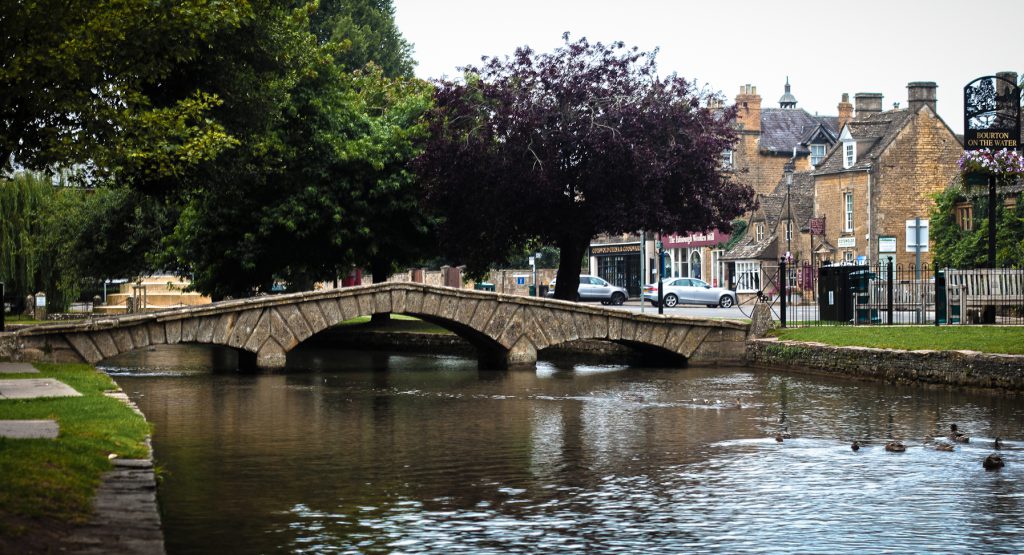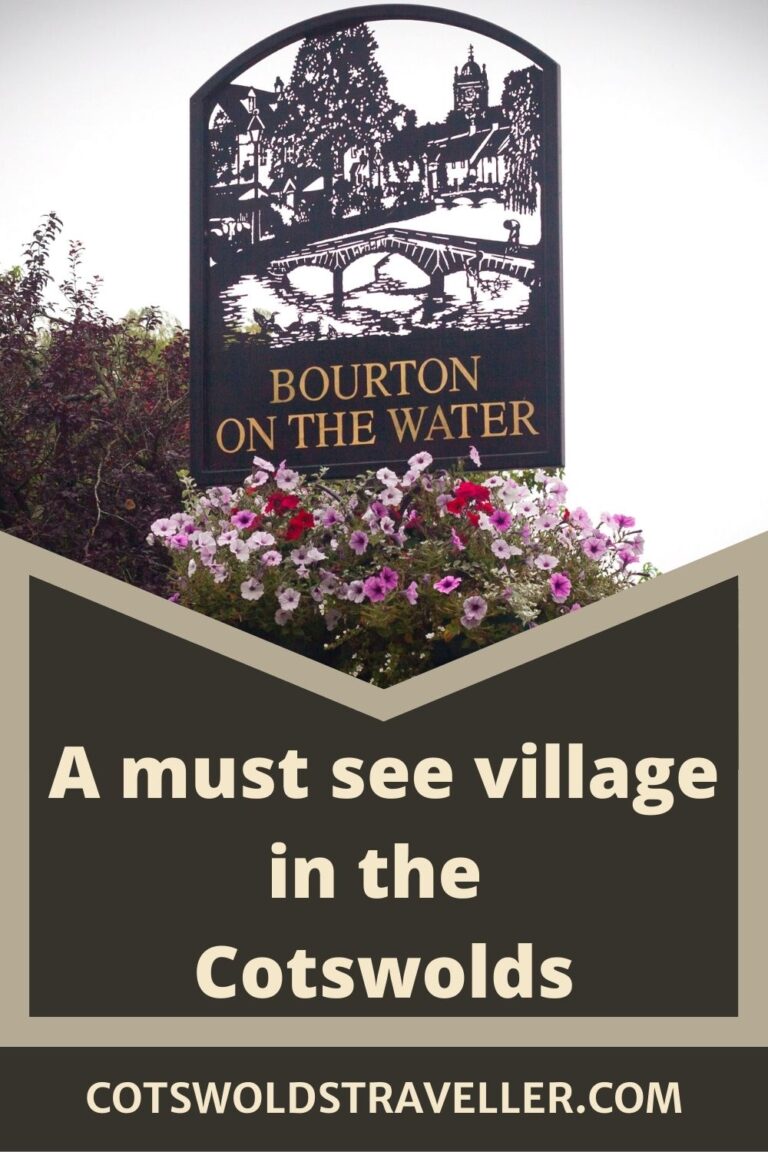Like many of the most beloved Cotswold villages, Bourton-on-the-Water’s story starts many centuries ago. In fact, in the case of Bourton, this story starts in the late Neolithic period, dating back nearly 6000 years, and with near constant occupation through to the 5th century AD. Remarkably, evidence of this occupation can still be seen just near the village, and if you can drag yourself away from the village centre with its stone bridges and beautiful river, you will be rewarded with one of Britain’s most extraordinary historic sites.

History of Bourton-on-the-Water
Just north of the centre of Bourton-on-the-Water, you can find Salmonsbury Camp, a beautifully preserved historic site that is the origins of the modern-day village. Originally believed to be a ceremonial centre, the earliest signs of human occupation at Salmonsbury Camp are a causeway dating back to at least 4,000BC. Some of the earthwork banks that created the enclosure are still visible today as is the next phase of human occupation, an Iron Age hillfort dated to around 100 BC.
Despite being named a “hillfort”, the enclosure’s location and siting do not seem to indicate that it was intended for defence, but rather trade and community. This administrative centre would have been in existence when the Romans arrived in Britain and its importance to the Romans would have been further enhanced by its proximity to the Roman Fosse Way, a roughly north-south Roman thoroughfare that linked the important centres of Exter and Lincoln, and at one time represented the western extent of the Roman occupation of Britain.
Modern-day Bourton-on-the-Water is located south of Salmonsbury Camp and was originally an Anglo-Saxon settlement that was established outside the fortifications of the hillfort on the River Windrush. This latter-day village, now without fortifications, was a trading post along the Fosse Way and developed on trade and commerce. This too is where the village gets its name, “Bourton” being a combination of the Saxon or Old English words ‘burh’ and ‘ton’, literally meaning the ‘settlement beside the camp’.
Bourton-on-the-Water’s history can also be traced through the evolution of its churches, and in particular, that of the parish church of St Lawrence. The church stands on the original site of a Roman temple. Later, a Saxon timber church was established on the spot from around 708 AD. This wooden structure was later replaced by a stone Norman church in 1110. The current St Lawrence church is a mix of 14th-century, Victorian and Georgian architecture all within the same building.
Modern-day Bourton-on-the-Water
Bourton-on-the-Water’s present-day fame is focused around the 5 stone footbridges that cross the River Windrush. The earliest of these, Mill Bridge, was built in 1654, and is the present-day road bridge at the western end of the village, nearest the war memorial. Perhaps the most iconic and photographed of all the bridges is High Bridge, built in 1756. Continuing east along the river are a road and footbridge very close together. the road bridge is Paynes Bridge, which was built in 1776 and the footbridge dates to 1911, and is called New Bridge. Finally, at the eastern end of the village is the Coronation Footbridge, which was built in 1953 to replace an earlier wooden bridge dating to 1750.
There is no “Kings Bridge” despite there being a pub of that name situated very close to Paynes Bridge.
These bridges and the river that slowly meanders through the village have lead to Bourton-on-the-Water gaining the nickname “the Venice of the Cotswolds”, despite there being only one ‘canal’ . This nickname though is enough to guarantee that the village welcomes and hosts hundreds of thousands of tourist visitors on an annual basis, many of whom have their photographs taken on one of the 5 bridges.
Beyond the beautiful river and the quaint bridges, Bourton-on-the-Water offers the visitor many varied sights and activities to explore and enjoy. The hungry or thirsty visitor will find many places to sit and enjoy a hot or cold drink or a meal, ranging from English teas, and scones with cream and jam, to traditional Sunday roast lunches served at many of the riverside pubs. Bourton-on-the-Water’s ancient trade and commerce heritage remains firmly enshrined in the modern village and there are many shops for visitors to browse and enjoy, from high-end luxury brands to local boutiques and even a Victorian Christmas shop at the eastern end of the village.


